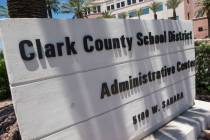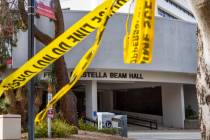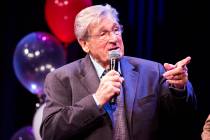$57M UNLV med school library will keep up with changing technology
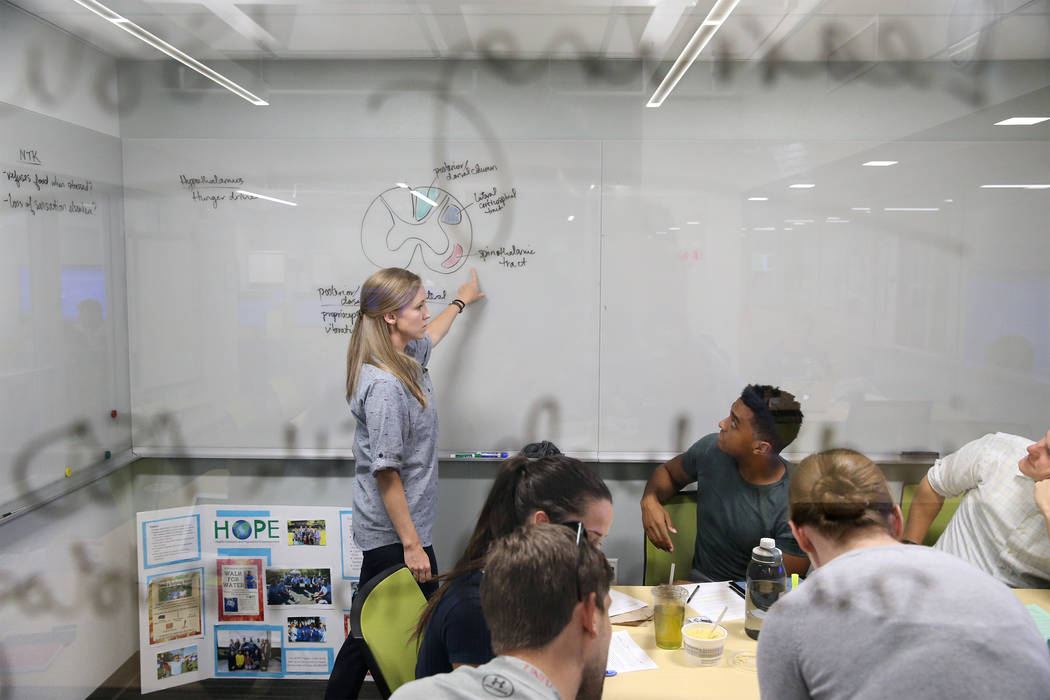

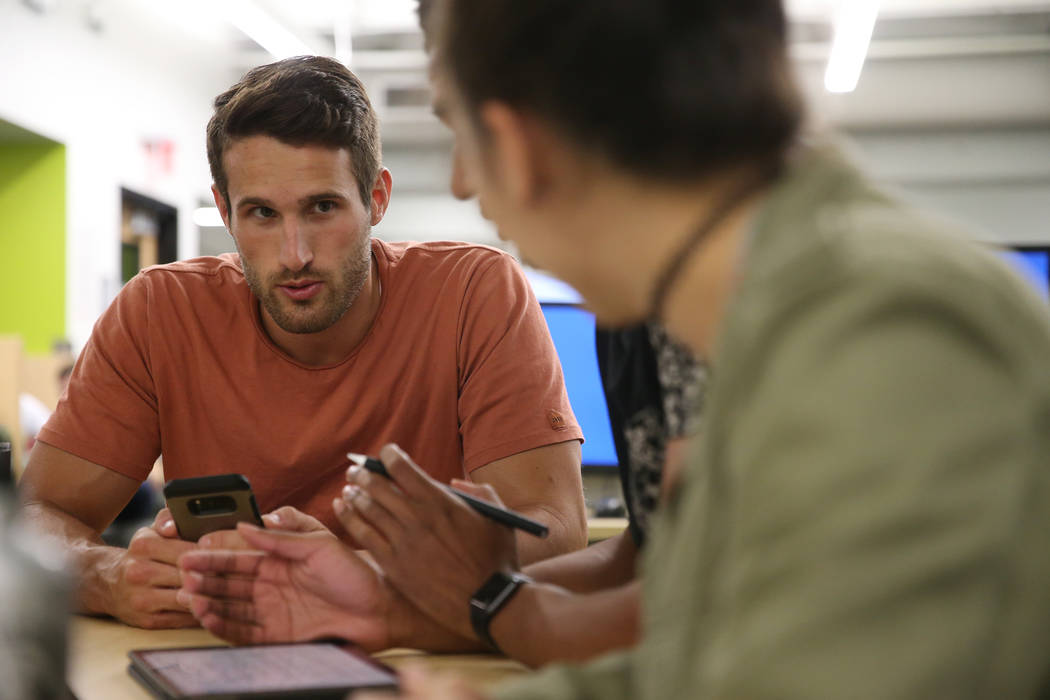
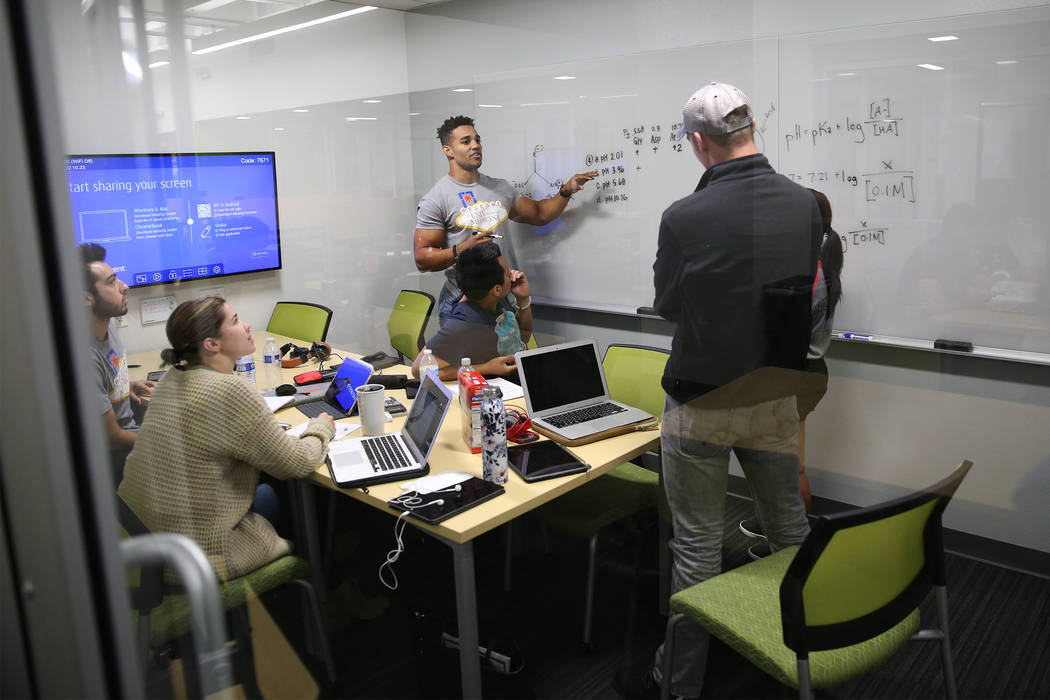
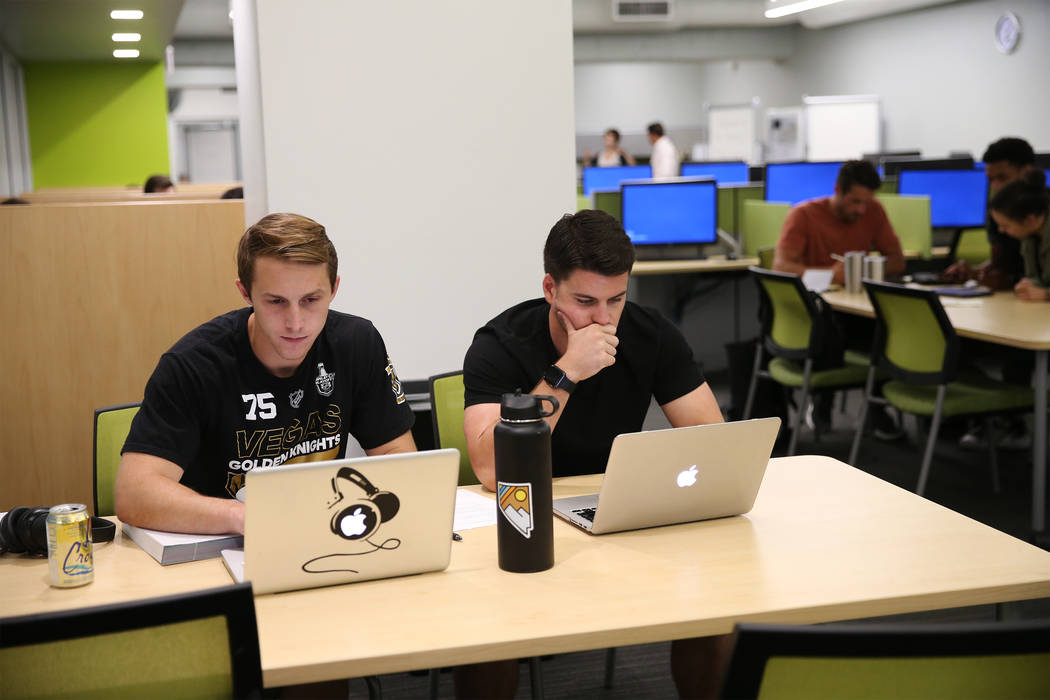
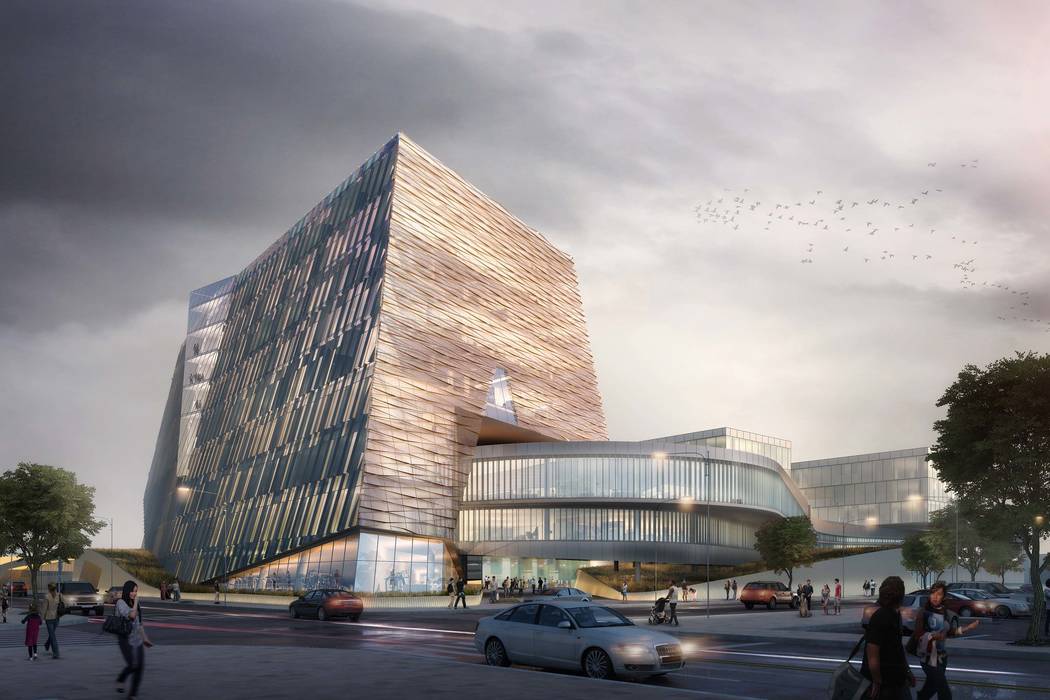
When Bruce Koeppen was founding dean of the medical school at Quinnipiac University in 2010, he made a decision that mirrored the changing technology landscape around him.
The fledgling school in North Haven, Connecticut, would be a paperless institution.
“The traditional library where you’ve got stacks and stacks of books is a thing of the past,” Koeppen said. “They (medical school students) need instant access to information, and that’s going to be electronic.”
Koeppen made the decision after the school acquired the former headquarters of Anthem Blue Cross. The trajectory he set in motion would govern the design and renovation of the buildings, especially the library.
“Each class comes in even more tech savvy,” Koeppen said. “They can use this faster and better than the faculty.”
The plan for UNLV’s health sciences library — the first phase of a two-prong approach to the medical education complex in the Las Vegas Medical District — is similar in design.
Since 2016, the university has added about 8,000 electronic books. Officials want the health science collection to be 98 percent electronic.
But with this approach, some have questioned the necessity of a $57 million library, or “knowledge commons,” as it has been called.
“I think that it’s nonsense,” said Kris Engelstad McGarry, a trustee of the Engelstad Family Foundation and a major donor to the university. “Have you heard of a $57 million library? I haven’t. It wasn’t earmarked for a library. It was earmarked for a medical school. It is a further sign of the university system not being able to regulate itself.”
However, Mark Doubrava, a member of the state Board of Regents, chairman of the board’s health sciences system committee, and an ophthalmologist, says the library makes sense.
“It’s another learning environment for students from different types of disciplines — medicine, dentistry, nursing — to be at a central location,” he said. “That interaction is important. Medicine, health care is now a team approach.”
Acting UNLV President Marta Meana told the state Board of Regents last month that moving forward on the nearly 49,000-square-foot space will allow the university to make use of the money that’s on hand now.
The funds consist of an anonymous $25 million donation that matched the $25 million in state funds approved in 2017.
Engelstad McGarry, who pulled the foundation’s $14 million commitment to the university upon news this year that former President Len Jessup was leaving, believes that a donor’s wishes should be taken into consideration.
“None of the donors that I have a relationship with are happy or feel any differently that I feel,” Engelstad McGarry said. “Every time they do something like this — proposing a library without consulting donors, without having a real strategic plan — it doesn’t encourage us to want to invest with them at all.”
Meana, however, said that she has had conversations with donors.
“Obviously, it seemed positive to me, which is why we’re going ahead with this approach,” Meana said. “A library was always an integral component of the original building. The only difference here is that we’re building it first.”
Nevada System of Higher Education Chancellor Thom Reilly agreed.
“The library isn’t a new thing,” he said. “I think library spaces are still used at universities. You can’t totally disregard the use of books. And spaces for libraries, as they incorporate technology, is important.”
‘Cutting-edge research’
Before Hurricane Sandy destroyed the health sciences library at New York University in 2012, the usage of electronic health journals — first appearing online in 1998 — was already a mainstream practice. By 2012, the university had eliminated most of the print versions and relocated some of the resources off-site.
“Students can access journals at the point of need, on their computer,” said Jeff Williams, director of the health sciences library. “It’s more convenient.”
The adoption of e-books, which are longer in format, came along more slowly, Williams said, and a significant number of books were still on-site at the library at the time of the hurricane. However, faced with the damage, the university decided to do away with its physical collection.
“We were the first of the legacy libraries to do this,” Williams said. “But it’s becoming more common with libraries. They’re relying more and more on removing some of their print resources to allow for different uses of that space.”
The 25,550-square-foot renovated library space has nearly 200,000 electronic books and more than 16,000 digital journals, and the space itself is “night and day” in terms of appearance, Williams said.
The library features better lighting, sound control, support for those who bring in their own technology, group study rooms that feature flat screen displays, a library classroom that better supports group learning and a technology innovation room to support 3D printing and data visualization. The library also includes 24 computer terminals, and officials are considering adding more because they’re so heavily used.
“I think it’s been a big success,” Williams said. “It seems to be the kind of library that this medical facility needs presently, and looking forward.”
UNLV’s library — if approved by the state’s Interim Finance Committee on Oct. 24 — will feature 24/7 access to information and current research. Preliminary documents show that the facility will include an instruction room, a learning commons with seating and computers, study carrels, an open group study space, one-, four- and 10-person study rooms, a media production lab, a model skeleton storage area and an information service desk. Plans show that only 800-square-feet of space will be dedicated to book stacks.
“The discipline is a constantly changing discipline,” Maggie Farrell, dean of university libraries at UNLV. “Having electronic access can make sure our students and faculty are getting the most recent research and medical information. If there’s cutting-edge research that released on a Monday, they’ll have it immediately.”
Lauren Hollifield, a second-year UNLV medical school student, said she experienced the ease of access this summer during an internship at Johns Hopkins University. She needed to look up information on post-operative pain related to hip and knee replacements.
“It’s working pretty well,” Hollifield said. “That’s where the future is going. I still like the feel of a real book for personal use, but the easy access is nice instead of flipping through pages.”
Other spaces in the building, apart from the library, include wellness rooms, break rooms, and a cafe.
Farrell said officials have pulled together the “very best ideas and practices” in order to lay the foundation for the library.
“By creating the library as the central hub, the central gathering place, it will help to build that community of students that the School of Medicine wants,” she said.
Building momentum
Higher education officials also believe that moving forward with the library will protect the university from losing both the state’s monetary contribution and the county’s land contribution.
The university must commence construction on the land by July 1, 2021, according to the agreement with Clark County, but the more immediate concern is the upcoming 2019 legislative session, and the $25 million state contribution that’s hanging in the balance.
“It ensures that the money won’t be repurposed,” Reilly said, adding that Gov. Brian Sandoval is “very supportive” of the new approach. “It appears that everybody has a lot of consensus around it.”
Sandoval did not respond to a request for comment.
Officials also believe that moving forward now is critical because of rising construction costs. A 10 percent per year inflation rate was incorporated into the $57 million figure, according to David Frommer, executive director of planning and construction at UNLV.
“The sooner we break ground on something, I think we’re better off,” Doubrava said.
The library will also help to support the school’s desire to increase the medical school class size beyond 60 — the number that’s currently permitted through preliminary accreditation. In addition, officials hope that movement now will spur additional investment from community donors on the second phase of the project, which is estimated to cost $182 million.
“It does show that momentum is there,” Doubrava said. “And once people can see part of the vision, I think that there will be more buy-in and support — certainly financial support — from the philanthropic community.”
Contact Natalie Bruzda at nbruzda@reviewjournal.com or 702-477-3897. Follow @NatalieBruzda on Twitter.














